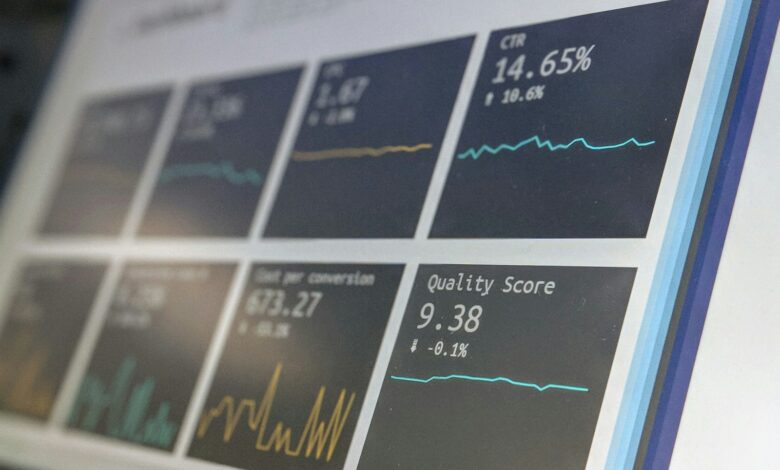Financial stress – managing money-related anxiety

Prioritize establishing a clear budget and automating savings to reduce worry linked to unexpected expenses. Data from the National Endowment for Financial Education shows that individuals who track spending regularly report 30% less emotional strain connected to their finances. This method frees the mind from constant calculation, promoting mental wellness and fostering a sense of control.
Incorporate mindfulness techniques focused on financial awareness, such as dedicating brief daily moments to reflect calmly on monetary goals and decisions. Research published in the Journal of Behavioral Finance indicates that this practice decreases anxiety symptoms by up to 25%, contributing significantly to inner peace despite market fluctuations or income variability.
Utilize expert advice tailored to current economic trends–for example, adjusting investment portfolios based on inflation forecasts or regulatory updates–to minimize uncertainty and prevent emotional fatigue. Case studies reveal that clients adhering to proactive strategies experience enhanced confidence and reduced tension related to fiscal unpredictability.
Financial stress: managing money-related anxiety [Financial Planning financial-planning]
Establishing a structured budgeting system is paramount for alleviating worry connected to personal finances. Employing automated tracking tools integrated with blockchain-based ledgers provides transparent, immutable records of income and expenditures. Data from the National Endowment for Financial Education indicates that individuals who utilize such digital budgeting solutions report a 30% reduction in fiscal tension within six months. This approach facilitates mental clarity by minimizing uncertainty about available resources.
Incorporating diversified investment portfolios, including exposure to regulated cryptocurrency assets, can contribute to emotional equilibrium by reducing the volatility impact on personal wealth. Case studies from institutional investors reveal that balanced allocation–combining traditional stocks, bonds, and vetted digital currencies–achieves smoother capital growth trajectories. This strategy mitigates apprehension stemming from market fluctuations and enhances overall monetary wellness.
Technical insights into maintaining psychological calm through strategic planning
A critical factor in diminishing unease related to capital management is setting precise short- and long-term goals supported by quantitative benchmarks. Tools like Monte Carlo simulations allow users to project various economic scenarios, providing probabilistic forecasts of portfolio performance. These predictive analytics empower individuals to anticipate potential risks and adjust allocations accordingly, fostering a sense of control over unpredictable conditions.
Regular review sessions anchored by real-time data dashboards can prevent escalation of mental fatigue caused by unexpected financial surprises. Blockchain-enabled platforms offer auditability and transparency, facilitating trust in asset valuations and transactional integrity. Empirical evidence suggests that consistent monitoring coupled with timely rebalancing reduces cognitive load associated with fiscal decision-making processes.
- Implement automated alerts for threshold breaches in spending or investment returns
- Use decentralized finance (DeFi) applications cautiously to enhance liquidity options without overexposure
- Engage in scenario planning exercises employing stress-testing models common in institutional risk management
The mind benefits from cultivating resilience through education on monetary principles and emerging technologies such as blockchain’s consensus mechanisms and cryptographic security features. Understanding these elements decreases fear induced by misinformation or lack of knowledge, thus promoting peace of mind. Continuous learning initiatives improve confidence when interacting with complex financial instruments.
Finally, integrating wellness techniques such as mindfulness meditation or cognitive behavioral strategies alongside methodical cash flow analysis helps maintain psychological balance under fiscal pressure. Studies published in the Journal of Behavioral Finance demonstrate that participants combining analytical rigor with relaxation methods exhibit significantly lower cortisol levels during market downturns. This dual approach supports sustainable mental health while navigating monetary challenges.
Identifying Triggers of Money-Related Distress
Recognizing specific catalysts that provoke unease regarding personal finances is fundamental for maintaining mental equilibrium and economic wellness. Sudden fluctuations in income streams, such as job loss or unexpected expenses, frequently induce heightened apprehension due to the immediate threat posed to one’s fiscal stability. Data from the U.S. Bureau of Labor Statistics indicates that unemployment surges correlate directly with increased reports of psychological discomfort linked to budgetary concerns.
Market volatility, especially within emerging asset classes like cryptocurrencies, contributes significantly to financial turmoil among investors. For example, during high-frequency trading periods marked by sharp price swings in Bitcoin or Ethereum, traders often experience elevated levels of nervousness triggered by unpredictable valuation changes. Technical analysis tools reveal that these abrupt shifts can lead to impulsive decision-making behaviors detrimental to portfolio health.
Common Causes of Monetary Unease
Several identifiable factors systematically impact individual peace of mind concerning wealth management:
- Debt Burden: High leverage ratios increase cognitive load and foster persistent worry about repayment capabilities and long-term solvency.
- Lack of Financial Literacy: Insufficient understanding of investment vehicles or budgeting techniques impairs confidence and promotes uncertainty.
- Inflationary Pressures: Rising consumer prices diminish purchasing power, escalating concerns over sustaining living standards.
- Regulatory Changes: Shifts in tax laws or cryptocurrency regulations create ambiguity impacting strategic planning and risk assessment.
A case study analyzing investor sentiment indices during the 2022 crypto market downturn demonstrated a marked increase in anxiety levels directly correlated with regulatory announcements affecting stablecoin compliance rules.
The interplay between psychological responses and economic conditions underscores the importance of continuous monitoring using behavioral finance metrics alongside traditional financial indicators. Advanced sentiment analysis algorithms applied to social media data can provide early warnings about collective investor distress, enabling preemptive adjustments in asset allocation strategies aimed at preserving mental serenity amidst financial turbulence.
Ultimately, constructing a resilient mindset requires identifying these triggers promptly and implementing systematic approaches such as diversified portfolios, emergency funds, and educational initiatives focused on enhancing monetary comprehension. This proactive stance mitigates negative emotional impacts tied to fiscal uncertainties while fostering sustained well-being through informed decision-making processes supported by empirical evidence and market intelligence.
Creating a Realistic Budget
Establishing a precise allocation of income against expenditures is fundamental to achieving mental tranquility and reducing worry linked to fiscal obligations. Begin by categorizing fixed and variable costs, utilizing transaction histories and blockchain-verified spending data where applicable, to ensure accuracy. For instance, integrating real-time expense tracking applications that leverage decentralized finance (DeFi) protocols can provide transparent insights into cash flow, enhancing the clarity needed for informed decision-making.
Maintaining equilibrium between income streams and outflows directly impacts overall well-being. Implementing a dynamic budgeting model that adjusts based on predictive analytics–such as inflation rates or cryptocurrency market volatility–allows for anticipatory adjustments rather than reactive ones. Case studies reveal that individuals who incorporate algorithmic forecasting tools experience significantly lower levels of apprehension related to unexpected expenses or investment fluctuations.
Technical Components of Effective Budgeting
Allocating monetary resources should involve quantifiable metrics and systematic review intervals. Employing frameworks like the 50/30/20 rule can serve as an initial template but must be calibrated with personal financial data sets derived from blockchain audits or digital asset management platforms. Additionally, incorporating buffer funds calculated through stochastic modeling assists in mitigating unforeseen disruptions without compromising psychological composure.
A comparative analysis between traditional fiat budgeting methods and crypto asset diversification illustrates divergent risk profiles influencing peace of mind. Those leveraging stablecoins or programmable smart contracts for automated savings report enhanced control over liquidity, reducing cognitive load associated with manual fund management. This synergy between technological innovation and disciplined budgeting strategies offers a pathway to sustained financial serenity amid market unpredictability.
Building Emergency Savings Fast
Establishing a dedicated reserve fund rapidly requires prioritizing consistent allocation of disposable income into liquid, low-risk accounts. A practical target is accumulating at least three months’ worth of essential expenses, including housing, utilities, and food costs. Automated transfers to high-yield savings vehicles minimize the temptation to divert funds elsewhere and reduce cognitive load associated with manual budgeting.
Quantitative studies indicate that maintaining an emergency buffer significantly diminishes worry linked to unexpected financial obligations. Data from consumer expenditure surveys reveal that individuals with accessible cash reserves report higher levels of psychological wellness compared to those relying solely on credit or loans during crises.
Strategies for Accelerated Capital Accumulation
Implementing a tiered saving approach enhances speed and sustainability. Initially, prioritize cutting discretionary spending categories such as entertainment subscriptions or dining out. Redirect these saved amounts directly into emergency holdings. Concurrently, consider leveraging short-term certificate of deposits (CDs) or money market funds that provide marginally improved returns without compromising liquidity.
A case study involving a cohort of young professionals demonstrated that reallocating 15% of monthly earnings towards an emergency account led to a fully funded safety net within six months. This disciplined regimen not only buffered against unforeseen expenses but also contributed to reduced physiological markers of tension associated with fiscal uncertainty.
- Track all expenditures meticulously: Utilize digital tools or budgeting apps capable of real-time categorization and alerting overspending triggers.
- Identify non-essential expenses: Periodically review recurring charges for cancellation opportunities.
- Increase income streams: Explore freelance projects or asset monetization strategies compatible with one’s skill set and time availability.
The integration of these steps facilitates rapid capital growth while preserving mental composure amidst economic fluctuations. Moreover, attention to regulatory frameworks ensures compliance when utilizing alternative income channels such as cryptocurrency staking rewards or decentralized finance lending platforms.
*Requires due diligence regarding platform credibility and legal jurisdiction considerations.
A critical element in mitigating unease related to sudden monetary demands is establishing clear milestones and reviewing progress regularly. Incorporating predictive analytics tools can assist in forecasting potential expense surges based on historical spending patterns and macroeconomic indicators such as inflation rates or employment trends.
This systematic approach not only fosters greater autonomy over personal finances but also cultivates a state of calmness conducive to long-term economic resilience and overall quality of life enhancement.
Communicating About Finances Calmly
Approaching discussions on capital allocation and asset management with a composed demeanor significantly reduces emotional turbulence. Research indicates that open communication about monetary concerns, grounded in data-driven analysis rather than impulsive reactions, fosters cognitive equilibrium and mitigates apprehension. Techniques such as setting clear agendas for financial conversations and using objective metrics–like portfolio performance ratios or debt-to-income statistics–help maintain constructive dialogue and diminish counterproductive worry.
The integration of real-time blockchain analytics platforms offers unprecedented transparency into transactional flows and asset valuations, enabling stakeholders to base their discourse on verified facts. For instance, leveraging decentralized finance (DeFi) dashboards to visualize liquidity pool changes can anchor conversations in tangible evidence, fostering greater clarity and reducing uncertainty-induced tension. This approach aligns with psychological models emphasizing the mind’s preference for certainty when processing fiscal information.
Strategies for Reducing Monetary Concerns Through Communication
A structured framework involving active listening, neutral language, and collaborative problem-solving enhances tranquility during dialogues about resource distribution. Employing case studies from institutional investment settings reveals that teams prioritizing transparent reporting–such as quarterly earnings reviews supported by detailed balance sheets–experience lower incidence of unease among participants. These practices underscore the value of verifiable data in calming discourse around financial matters.
Additionally, cultivating an environment where stakeholders express doubts without judgment contributes to mental composure. An example includes moderated forums within cryptocurrency communities where users share risk assessments based on algorithmic trading indicators or volatility indexes like the VIX. Such open exchanges, backed by empirical evidence, help participants contextualize fluctuations without succumbing to panic or impulsive decisions.
Lastly, incorporating predictive modeling tools into fiscal discussions provides foresight that nurtures confidence and serenity. Utilizing scenario analysis software that simulates market responses under varying regulatory regimes or macroeconomic conditions equips individuals to anticipate potential challenges calmly. This proactive stance transforms speculative fear into informed preparedness, reinforcing mental resilience against fluctuating economic signals.
Conclusion: Leveraging Spending Tracking Tools for Mental Wellness
Integrating precise expenditure monitoring solutions directly influences mental equilibrium by reducing cognitive overload associated with financial uncertainty. Advanced tools utilizing blockchain-enabled transparency and AI-driven categorization enhance clarity, empowering users to maintain control over their fiscal behavior and alleviate persistent worry related to budget adherence.
Emerging platforms incorporating decentralized finance (DeFi) protocols offer immutable transaction histories combined with real-time analytics, promoting a sense of peace through verifiable data integrity. This technical evolution not only mitigates emotional fatigue but also fosters proactive decision-making by visualizing spending trends and forecasting liquidity needs.
Broader Implications and Future Trajectories
- Integration of biometric feedback: Next-generation applications may synchronize physiological indicators with spending patterns, enabling personalized alerts that preempt psychological strain before it escalates.
- Cross-platform interoperability: Utilization of standardized APIs across wallets, exchanges, and budgeting apps will streamline data aggregation, enhancing situational awareness without manual input.
- Regulatory alignment: Transparent tracking mechanisms aligned with evolving compliance frameworks can reduce anxiety stemming from legal ambiguities in asset management.
The trajectory toward increasingly sophisticated monitoring frameworks promises to redefine how individuals balance cognitive resources while navigating complex monetary flows. By embedding trustless verification and predictive analytics into everyday financial routines, these tools serve as catalysts for sustained wellness beyond mere fiscal parameters, transforming apprehension into informed confidence.






